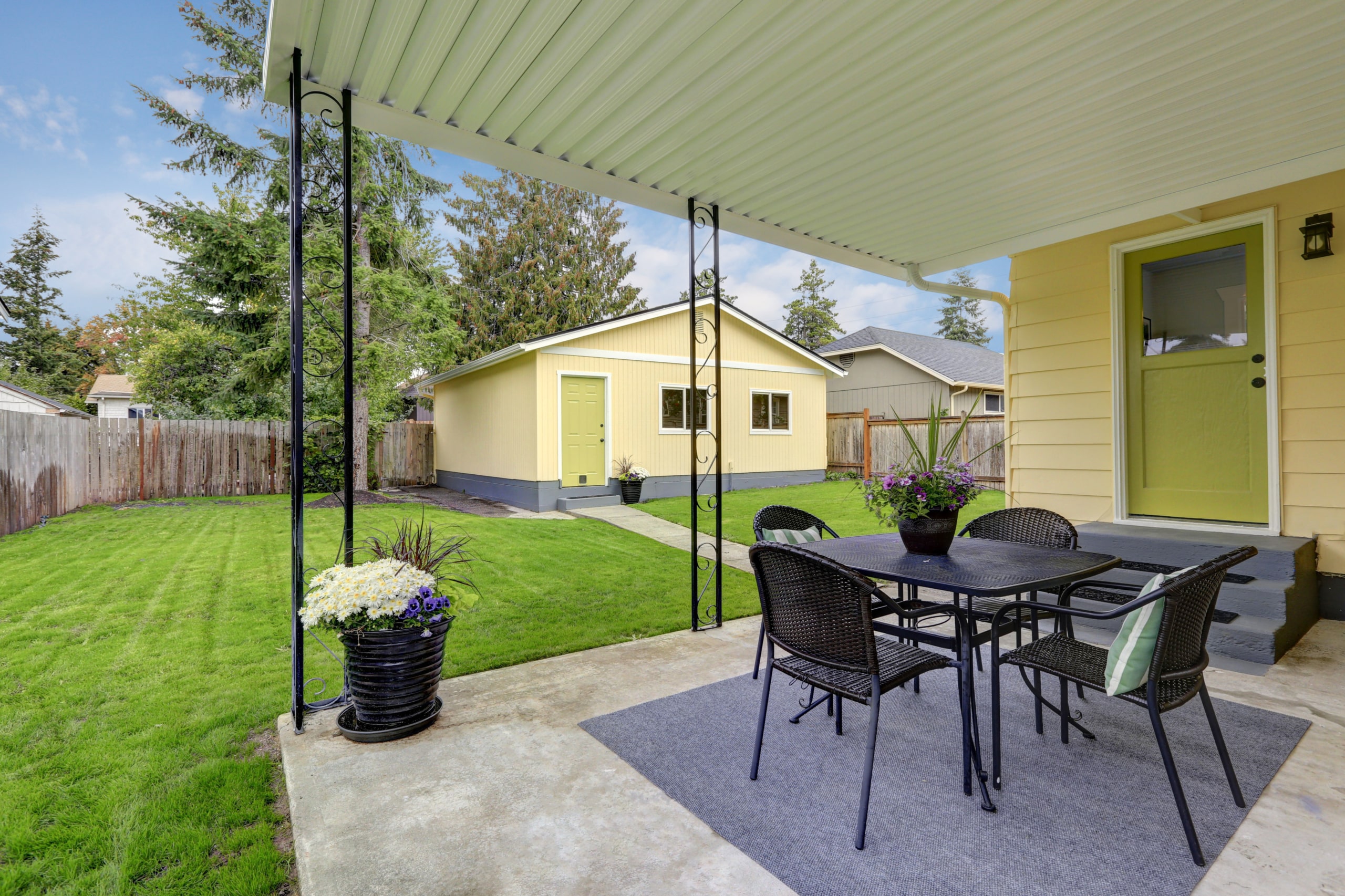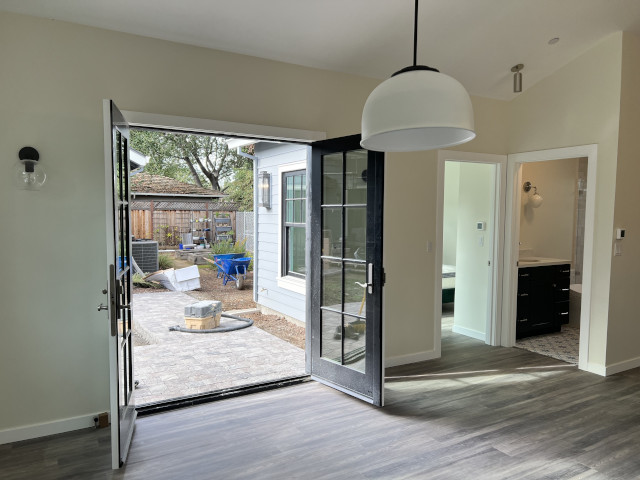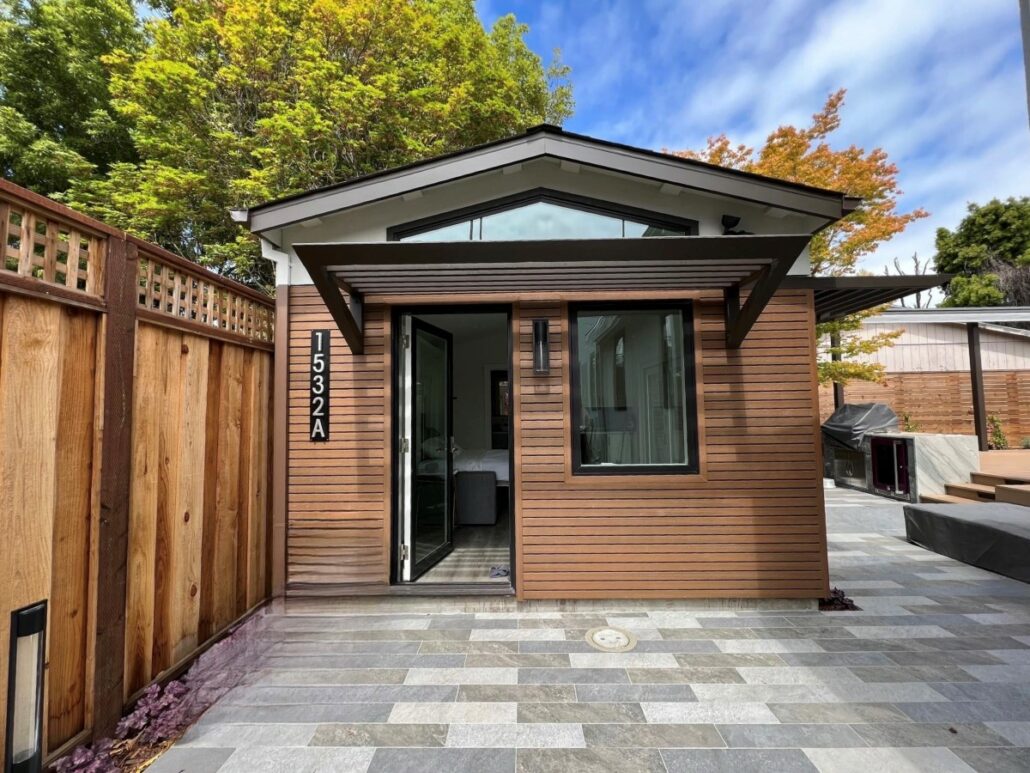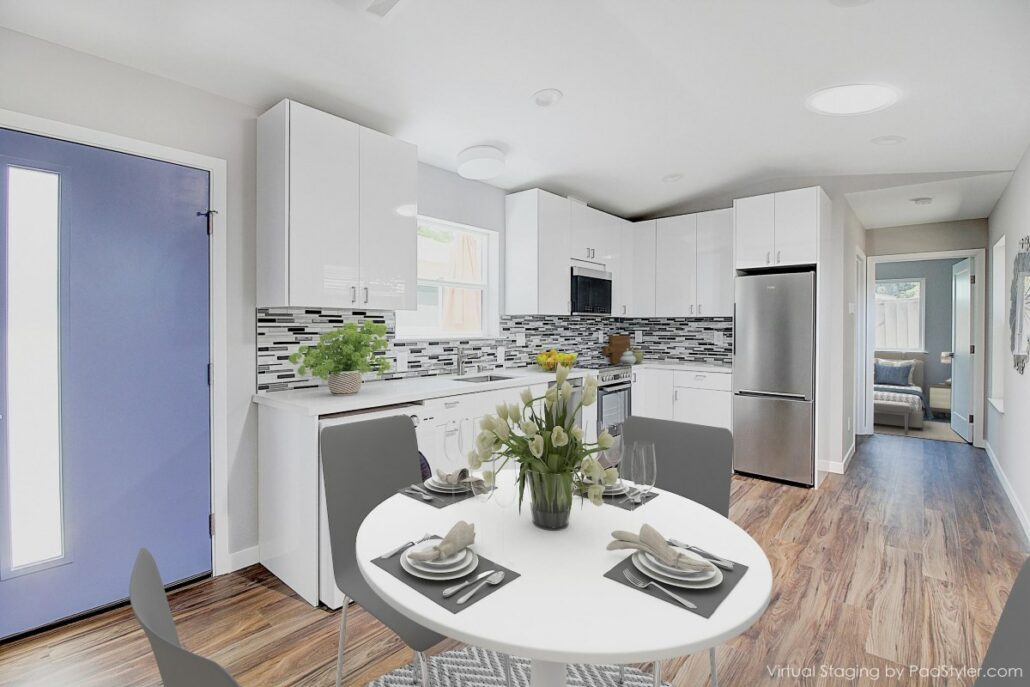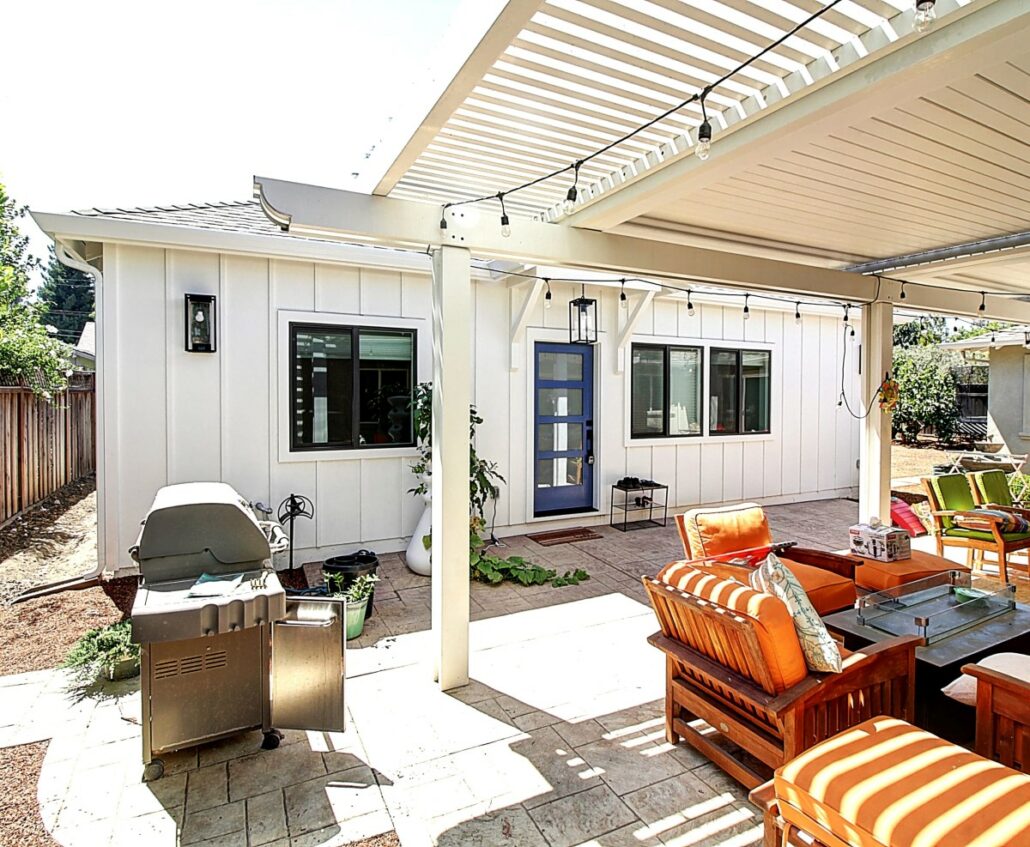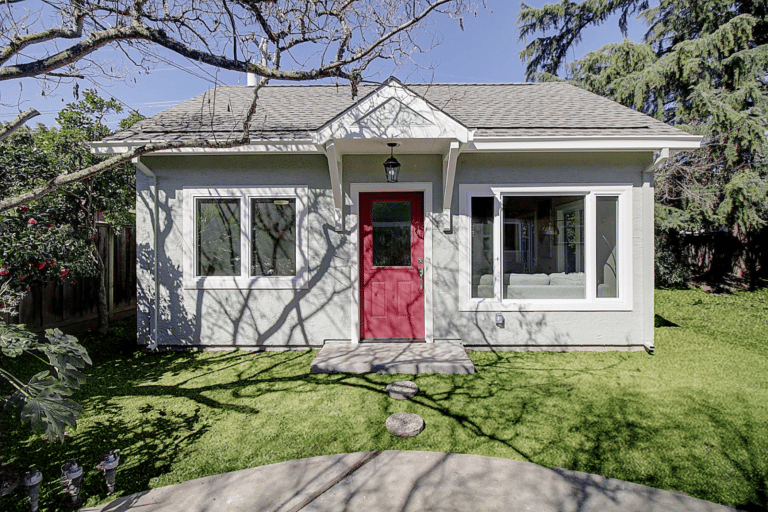Is Your Property Eligible? Exploring Minimum Lot Size for Bay Area ADU Construction
In homes where family connections, comfort, and extra space are cherished, an ADU (Accessory Dwelling Unit) offers the perfect balance. Whether you’re looking to create a private office, a welcoming retreat for guests, or a cozy home for aging parents, ADUs provide a thoughtful solution that extends your living space in meaningful ways.
Before diving into planning your ideal addition, it’s crucial to ensure your property can accommodate an ADU. Historically, one of the key considerations was the minimum lot size, which often dictated whether ADU plans could move forward. However, recent changes in California state law have transformed the landscape for ADU construction.
Why Does Minimum Lot Size No Longer Matter?
In the past, minimum lot size was a critical factor because local zoning laws often required a certain amount of land before an ADU could be constructed. This was designed to ensure new structures fit within the neighborhood’s existing layout and character. However, under the current state laws, homeowners now have the freedom to build ADUs on smaller lots, as long as they comply with other local zoning requirements, such as setbacks and height restrictions.
The Impact of California State Laws on ADU Development
In 2019 California lawmakers made significant legislative changes to make it easier for homeowners to build Accessory Dwelling Units (ADUs). Two laws, AB 68 and AB 881, have been pivotal in removing previous barriers, including the elimination of minimum lot size requirements to build an ADU – across the state.
AB 68: Breaking Down Barriers
Purpose:
AB 68 significantly reduces barriers to the development of ADUs by limiting local governments’ ability to impose restrictions, such as minimum lot size requirements. It allows homeowners to build ADUs on lots of any size and mandates that local governments approve or deny ADU permit applications within 60 days.
Key Points:
- Prohibits local agencies from establishing minimum lot size requirements for ADUs.
- Streamlines the approval process by requiring local agencies to act on ADU applications more quickly.
AB 881: Enhanced ADU Flexibility
Purpose:
AB 881 complements AB 68 by further limiting local governments’ ability to regulate ADUs. It removes owner-occupancy requirements for five years and clarifies the types of areas where ADUs can be built, including properties with multi-family buildings.
Key Points:
- Ensures that ADUs can be built on lots regardless of their size, as long as other zoning and building code requirements are met.
- Eliminates certain local restrictions that previously made it difficult to build ADUs, such as excessive parking requirements and limits on where ADUs could be placed on a property.
What to Expect Across the Bay Area
While the state law removes lot size as a barrier, it’s important to note that individual cities in the Bay Area may still have other specific regulations:
- Palo Alto and San Jose – No minimum lot size is required, but cities may enforce stricter setbacks, height limits, and design guidelines to ensure ADUs integrate well with the surrounding neighborhood.
- Los Altos and Hillsborough – These cities are known for having stricter zoning laws and design review processes. Los Altos, in particular, has specific neighborhood overlay zones that can impose additional restrictions. Hillsborough, with its large residential lots, typically enforces significant setbacks and may have more rigorous design reviews due to the town’s overall character and zoning standards.
Additional Flexibility Opportunities
Even with these statewide changes, certain conditions might allow for further flexibility:
- Proximity to Public Transit – Properties near transit routes may qualify for additional allowances, such as reduced parking requirements.
- Historical Zoning Adjustments – In neighborhoods with unique historical zoning, there may be opportunities to build ADUs with different standards, even on smaller lots.
- Non-Conforming Lots – Some lots that don’t meet the standard criteria might still be eligible for an ADU through a variance, especially if the project demonstrates minimal impact on the neighborhood.
Limitations – Other Than Minimum Lot Size – in ADU Regulations
While California state laws such as AB 68 and AB 881 have removed the barrier of minimum lot size for ADUs, local governments in the Bay Area still have the authority to impose additional regulations. These local variations can have a significant impact on your ADU project, as different cities may enforce unique zoning rules, setback requirements, parking regulations, and design standards.
- Setbacks: A Key Factor in ADU Placement
Setbacks are the required distance between the ADU and the property lines. Although state law mandates a 4-foot setback from the rear and side property lines, some cities have stricter requirements. For instance, Palo Alto might impose additional restrictions depending on the neighborhood, and Los Altos may enforce larger setback distances due to the town’s historical characteristics and lot sizes. On the other hand, San Francisco is more lenient, especially in areas where space is limited, allowing for smaller setbacks to accommodate more ADUs.
- Parking Requirements
Parking regulations can also vary significantly between cities. While state law provides certain exemptions (such as for ADUs near public transit or converted from existing structures), some cities may still require parking spaces for new ADUs.
That said, most cities have eliminated many parking requirements to encourage the development of ADUs, particularly in transit-oriented areas. It’s crucial to check with your city’s specific parking requirements, as these can influence both the cost and feasibility of your ADU project.
Parking Requirements in California State LawCalifornia state law offers exemptions from parking requirements for ADUs in certain cases, such as:If the ADU is located within ½ mile of public transit.If the ADU is part of an existing primary residence or a converted structure like a garage.If the property is in a historical district or has other unique characteristics.These statewide exemptions are valid across most cities but local municipalities may add more specific rules. For instance, if a city does not have public transportation nearby, it may still require parking spaces for an ADU. This is based on laws from AB 68 and AB 881, which streamline the approval process and remove or reduce some traditional barriers like parking requirements. |
- Design and Aesthetic Guidelines
Cities like Hillsborough and Los Altos are known for their stricter design review processes. In these areas, local authorities may require your ADU to blend aesthetically with the primary residence or the surrounding neighborhood. This can include stipulations on the ADU’s height, exterior materials, and even landscaping. Palo Alto may also have design guidelines that regulate the size and appearance of your ADU, ensuring it complements the architectural style of the area.
- Historical and Environmental Considerations
In certain parts of the Bay Area, especially in cities like Berkeley, ADUs in historically significant districts may be subject to additional reviews to preserve the character of the neighborhood. These reviews can affect the ADU’s design and placement, adding another layer of complexity to the project. Similarly, areas with environmental restrictions, such as Los Altos Hills, may have limits on ADU construction due to concerns over water drainage, fire safety, or wildlife preservation.
Navigating These Regulations with Acton ADU
Understanding these local variations is crucial to successfully navigating the ADU approval process. Each city has its own unique blend of regulations that can impact everything from the placement of your unit to its overall design. Working with a partner like Acton ADU, who understands both the statewide regulations and the local nuances, ensures that your project remains compliant and streamlined, allowing you to build an ADU that fits your vision while adhering to all necessary requirements.
How Minimum Lot Size Affects ADU Design
The removal of minimum lot size restrictions through California laws like AB 68 and AB 881 has opened up exciting possibilities for homeowners looking to build Accessory Dwelling Units (ADUs). Without the burden of adhering to specific lot size requirements, homeowners now have greater freedom to explore different design options that cater to their unique needs. Whether you want to maximize your property’s space with a larger unit or take a creative approach with a smaller structure, the flexibility in ADU design has never been better.
Flexibility in ADU Design
With the minimum lot size barrier gone, homeowners can now focus more on what best suits their property and lifestyle rather than worrying about compliance with outdated size regulations. For example, you can choose between detached, attached, or conversion ADUs, each offering different design potentials:
- Detached ADUs – These are free-standing structures, separate from the main house. With no minimum lot size restrictions, detached ADUs can now be designed as larger, independent units with up to 1,200 square feet of living space. They offer flexibility in placement, allowing you to create a private space for guests, a home office, or rental income without infringing on your primary residence’s structure.
- Attached ADUs – An attached ADU is built as an extension of your main home, sharing at least one wall. These units can be up to 50% of the size of the main residence, but even if your primary home is smaller, state law guarantees a minimum ADU size of 800 square feet. This flexibility allows you to create more living space without the limitations of older lot size rules.
- Garage Conversions – One of the most popular ADU options, converting an existing garage into a living space, is easier than ever. The removal of lot size restrictions means homeowners can transform their garages into ADUs without worrying about whether their lot is large enough. This option also allows for cost savings since the structural framework is already in place, and garage conversions are often exempt from additional parking requirements.
Trust Acton ADU to Bring Your Vision to Life
As the landscape of ADU construction in California continues to evolve, homeowners now have unprecedented freedom to build on their properties, regardless of lot size. From creating multigenerational living spaces to building a peaceful retreat, the removal of minimum lot size restrictions opens the door to countless possibilities. However, navigating local regulations and optimizing your property’s potential requires expertise and attention to detail.
With 30+ years of experience specializing in ADU construction, Acton ADU understands the complexities of local regulations and the unique needs of Bay Area homeowners. From design to completion, our team will guide you through every step of the process, ensuring that your ADU meets all local requirements while maximizing your available space. Whether you’re adding a detached ADU, converting a garage, or planning a custom build, Acton ADU is your trusted partner in creating the perfect addition to your home!

